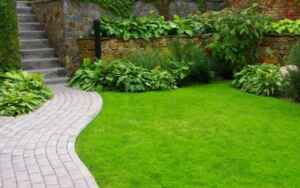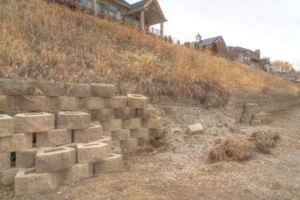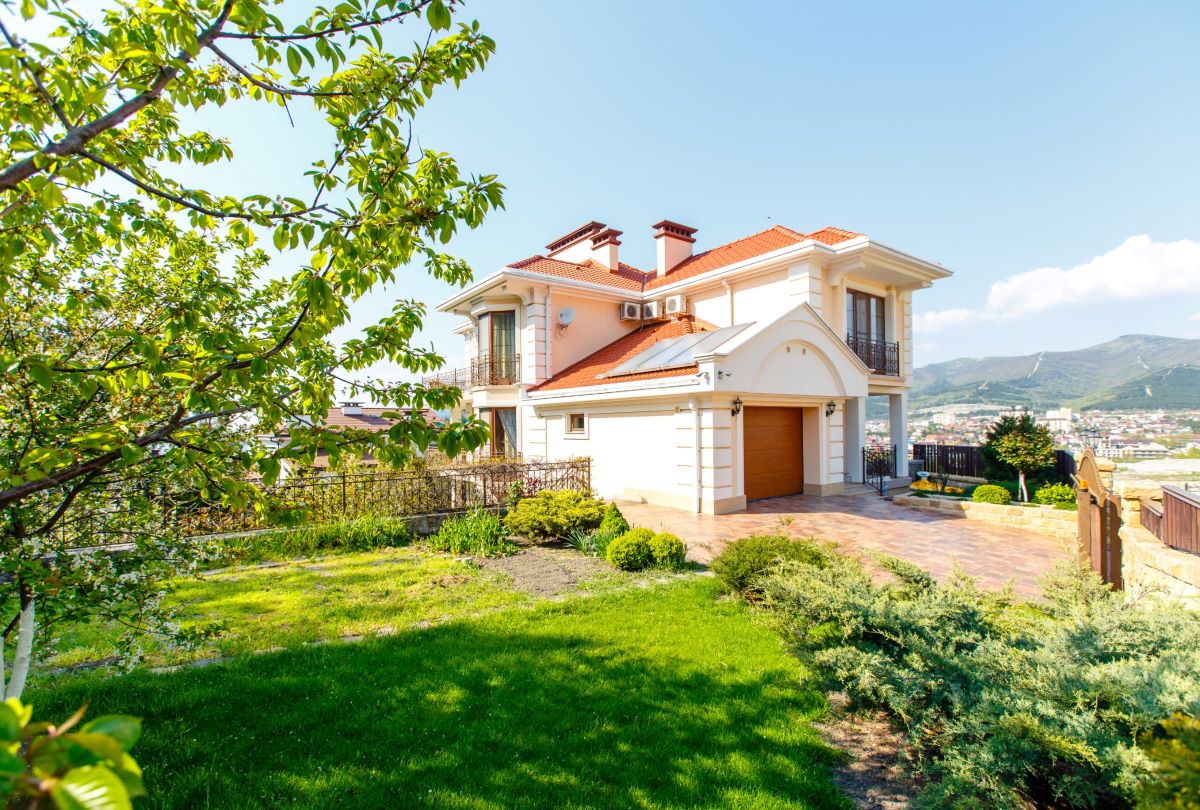How to Landscape a Steep-Sloped Yard
If you have a steep slope in your yard, you may be wondering if it is worth landscaping. There are benefits to doing so, but there are also risks that you need to be aware of.
In this blog post, we will discuss 9 tips for how to landscape a steep slope on a budget. We will also talk about what qualifies as a steep slope and when you should consider landscaping it. Keep reading for more information!
What Qualifies As a Steep Slope In a Yard?
Generally speaking, a steep slope is any incline that is greater than 20 degrees. This can be tricky to measure if you are not familiar with using a level or measuring tape.
If you are unsure whether or not your slope qualifies, it is always best to consult with a professional landscaper or contractor. They will be able to give you an accurate assessment of the situation.
 Nine Budget-Friendly Ways to Landscape a Steep Slope
Nine Budget-Friendly Ways to Landscape a Steep Slope
If you have a steep slope in your yard, you may be overwhelmed at the thought or potential cost of a landscaping project. Here are nine great ways to landscape a steep slope in your yard without breaking the bank:
1) Use Mulch
One of the easiest and most budget-friendly ways to landscape a steep slope is to use mulch. You can use wood chips, shredded leaves, or any other type of mulch. This will help to control erosion and keep your plants in place.
Make sure to choose a mulch that is appropriate for your climate and soil type. Mulching also has the added benefit of helping to retain moisture in the soil, which is especially important in hot or dry climates.
Just be sure not to overdo it – too much mulch can suffocate your plants! A layer that is two to four inches should be sufficient.
2) Plant Native Plants
Another great tip is to use plants that are native to your area. These plants will be better adapted to the climate and soil conditions, which means they will be more likely to thrive. Not only will this save you money, but it will also help you create a more sustainable landscape.
3) Use Groundcovers
Groundcovers are an excellent way to fill in empty spaces and prevent erosion. They also help to control weeds and can add a splash of color to your landscape. Some great groundcover options include creeping phlox, sweet woodruff, sedum, and vinca minor.
Be sure to choose a ground cover that is appropriate for your climate and soil type. You will also want to take into consideration how much sun or shade the area gets.
Some groundcovers can be quite aggressive, so you may need to do some research to find one that is right for you. Creeping phlox, for example, can quickly spread and crowd out other plants if not kept in check.
4) Erosion-Control Blanket
If you are concerned about erosion, you may want to consider using an erosion-control blanket. This is a temporary measure that will help to control soil loss until your plants have had a chance to take root.
Erosion-control blankets are made of biodegradable materials, such as straw or wood fiber, and are held in place with stakes or pins. They should be removed once the plants have taken root and can hold their own against erosion.
If you decide to use an erosion-control blanket, make sure to remove it once the plants are established. Otherwise, you run the risk of smothering them.
Erosion-control blankets can be a great way to control soil loss, but they should only be used as a temporary measure.
5) Create a Path
If you have a steep slope, chances are you will need to create a path so that you can safely get from one point to another. This is not only a great way to add interest to your landscape, but it can also help to control erosion.
There are many different materials you can use to create a path, such as pavers, stones, or gravel. If you are working with a tight budget, you may want to consider using recycled materials.
You will also want to take the time to properly prepare the area before you start laying the path. This means removing any debris, leveling the ground, and compacting the soil.
Once you have prepared the area, you can begin laying the path. Start by marking out the route with string or stakes. Then, begin setting the pavers, stones, or gravel in place.
Be sure to leave enough room for plants to grow between the stones or pavers. Otherwise, they will quickly become overgrown and difficult to maintain.
 6) Use Recycled Materials
6) Use Recycled Materials
If you are working with a tight budget, you may want to consider using recycled materials. This is a great way to save money and reduce your environmental impact.
There are many different ways you can incorporate recycled materials into your landscape. For example, you could use old tires as planters or pavers. You could also use broken pieces of concrete as edging or mulch.
Another great option is to use recycled glass bottles as vases for plants or as decoration on walkways.
No matter what material you choose, make sure it is safe for plants and will not leach toxins into the soil.
You should also be aware that some recycled materials, such as concrete and glass, can be quite heavy. This means that you will need to take care when placing them.
It is also important to note that recycled materials may not always be the most aesthetically pleasing option. If you are concerned about the appearance of your landscape, you may want to consider using new materials.
No matter what material you choose, make sure it is safe for plants and will not leach toxins into the soil.
You should also be aware that some recycled materials, such as concrete and glass, can be quite heavy. This means that you will need to take care when placing them.
It is also important to note that recycled materials may not always be the most aesthetically pleasing option. If you are concerned about the appearance of your landscape, you may want to consider using new materials.
7) Incorporate Water
If you have a steep slope, you may want to consider incorporating water into your landscape. This is a great way to add interest and visual appeal.
There are many different ways you can incorporate water into your landscape. For example, you could install a waterfall or fountain. You could also create a pond or fishpond.
Another option is to simply use a hose or sprinkler to create a stream of running water.
No matter what option you choose, make sure that the water is properly drained so that it does not pool at the bottom of the slope and cause erosion.
You will also want to take care when choosing plants for an area that gets wet frequently. Make sure they are appropriate for the soil and climate.
Some great options for water-loving plants include irises, water lilies, and sedges.
8) Use Cages or Nets
If you are concerned about rocks or debris sliding down the slope, you may want to consider using cages or nets. This is a great way to keep your landscape safe and secure.
You can purchase cages or nets at most home improvement stores. They are usually made of steel or plastic and can be easily installed.
Make sure that the cage or net is properly secured so that it does not come loose in high winds.
You may also want to consider anchoring it to the ground with stakes or posts.
Cages and nets are an effective way to prevent rocks and debris from sliding down a slope, but they can also be used for other purposes. For example, you could use them to create privacy screens or windbreaks.
You could also use them to support climbing plants or vines.
No matter how you use them, cages and nets are a great way to add safety and security to your landscape.
 9) Build a Retaining Wall
9) Build a Retaining Wall
If you are looking for a more permanent solution, you may want to consider building a retaining wall. This is a great way to stabilize the slope and prevent erosion.
Retaining walls can be made from many different materials, including concrete, stone, brick, and wood.
You will need to choose a material that is appropriate for the climate and soil conditions. You will also want to make sure that the wall is properly reinforced so that it does not collapse.
Building a retaining wall is a big project, but it is one of the most effective ways to landscape a steep slope.
There are many different ways to landscape a steep slope on a budget. By following these tips, you can create an attractive and safe landscape that will last for years to come.
How to Minimize the Steep Slope in Your Yard
If you are set on landscaping a steep slope, there are some things that you can do to minimize the risks. First, make sure that you choose plants that are appropriate for your soil type and sun exposure.
You should also consider using mulch or rocks to help with erosion control. Finally, be sure to put up signs or fences if necessary to warn people of the potential hazards.
Landscaping a steep slope can be a great way to add privacy, interest, and value to your home. Just be sure to do your research and take the necessary precautions to ensure a successful project!

